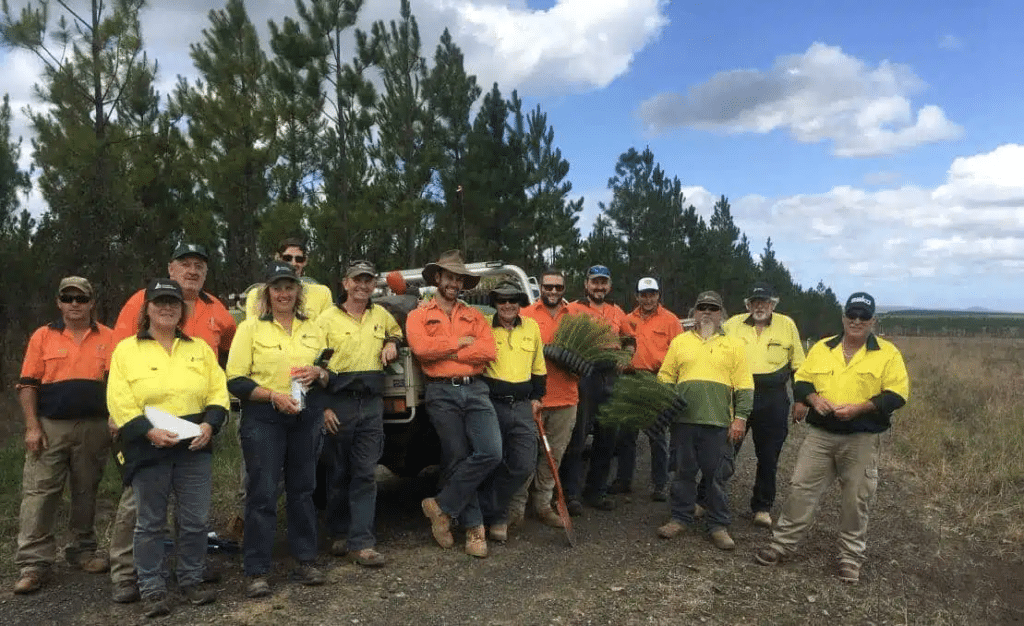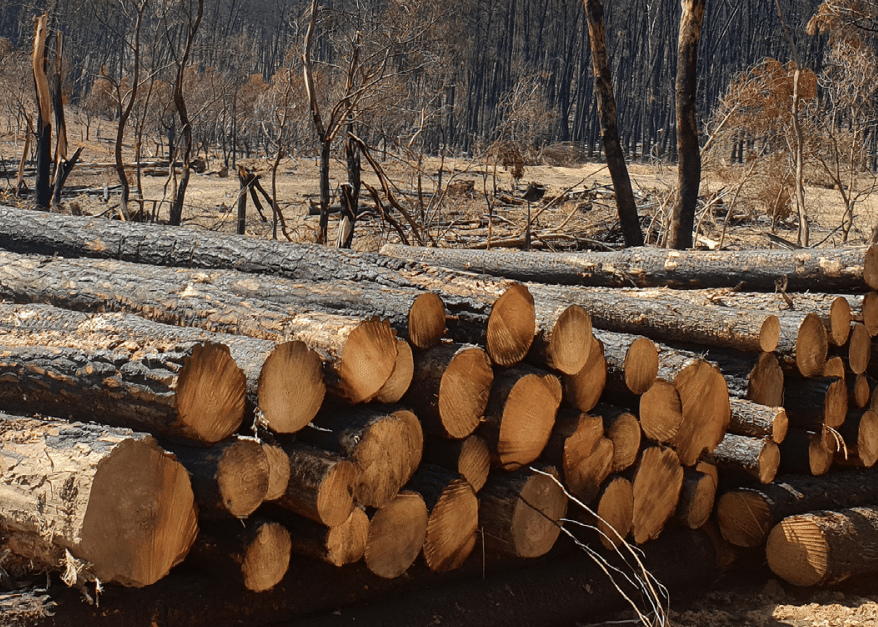More than 2.7 million tonnes of timber have been salvaged from NSW forests – with forest managers still counting the toll from the Back Summer fires of 2019/20.
It is the largest and most successful salvage operation in Australian history, with foresters now using remote sensing technology and estate modelling to improve preparation for future natural disasters.
These include prioritising salvage operations and informing processes, contractors and the community about the long-term impact of fires and salvage on future resources. In addition, they are now looking to log storage options under water or sprinklers, which could extend the lift of burnt timber after fire.
NSW Forestry Corporation, the body responsible for managing the state’s forests, has published a report cataloguing the challenges, successes and lessons from Australia’s most successful timber salvage program, which will inform and educate fire recovery for decades.
Already, it is working with the NSW Rural Fire Service and other government agencies to implement improvements recommended by those inquiries.
Of more than 2 million hectares of state forests, fires destroyed more than 830,000 hectares of native forests and 62,000 hectares of plantations, leading Forestry Corporation to accelerate planting over the 2021-26 period to make up for the losses.

According to Peter Stiles, Sales and Procurement Manager, the report emphasises the importance of effective collaboration, which he said was critical to the record salvage program in Tumut and Tumbarumba regions in the state’s southwest.
“The Black Summer fires were devastating for the local community, and the region’s softwood timber industry was severely impacted, with about 50 per cent of the pine plantations in the southwest slopes burnt,” Mr Stiles said.
The Tumut region is home to Australia’s most significant timber plantation – with over 90,000 hectares of forest plantation. It also suffered from one of the highest destruction rates – with more than 60% of the estate burnt.
“Unlike many native species, pine trees die when burnt, but the industry was able to mobilise quickly,” Mr Stiles said, adding that despite the Covid pandemic, dedicated crews salvaged 2.7 million tonnes of softwood timbers.
“This was the biggest ever salvage effort in this country’s history, and there is much to be proud of in what the industry achieved.”
“The salvage program kept the lights for local processors immediately following the fires” and maintained a consistent supply of essential structural timber and packaging products during high demand.
“The lessons from the past underpinned the success of this salvage program,” he said before adding that we “need to share the lessons from the Black Summer salvage with the industry for the future.”

According to report author Damien O’Reilly, the review stressed the importance of collaboration between and across the timber and forest value chain.
“Forestry Corporation of NSW is a plantation manager that engages contractors to harvest timber and supply it to third party processors and close collaboration across the supply chain and with local and interstate forest growers was an essential ingredient in the salvage program’s success,” according to Mr O’Reilly.
“The timber industry as a whole shares the objective of maintaining a sustainable supply of timber not just for today but also for the future, so the industry worked to balance immediate and long-term timber needs in the decisions following the fires.”
He said the salvage program benefited from the experiences in assessing damage and managing the processing of burnt timers from past firest – namely the Biilo Road fire in 2006 and Jananee in 2014, before acknowledging advice and support from Victoria, South Australia and through the FWPA.
According to Mr O’Reilly, flexibility is crucial – not only for forest managers and contractors but also for customers; “to both maximise the salvage of burnt timber and minimise the harvesting of unburnt timber to allow it to grow on to deliver timber in future years.”
- In August, Wood Central covered the extensive replanting programme Forestry Corporation undertook in the aftermath of the Black Summer fires. For more information, read Wood Central’s special feature.






